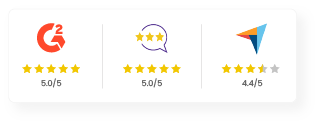A Complete Guide
Building a Custom Skills Framework: Tailor Your L&D Strategy
Building a Custom Skills Framework: Tailor Your L&D Strategy
Look at this: ChatGPT hit a million users in just a few days. Then Meta’s Threads shattered that record, reaching a million in mere hours. That’s the speed of change we’re living in.
In a world moving this fast, businesses don’t just need the right skills—they need the agility and innovation to keep up, adapt, and stay ahead.
And the one domain that plays a key role in this shift to a skills-first organization is Learning and Development (L&D). L&D must urgently evolve its strategy—shifting from traditional training approaches to a more agile, skills-driven model. The goal? To equip the organization with exactly what it needs: the right skills at the right time, the ability to pivot quickly, and a culture of continuous learning that fuels both productivity and innovation aligned to workforce needs.
How L&D Can Drive a Skills-First Approach
To adopt a skills-first approach a reality, it is not enough to just train employees. The focus has to on creating a structured, scalable way for people to build, apply, and evolve their skills in real time.
So, how can L&D make this happen?
Start with a Skills Framework
A well-designed skills framework acts as a blueprint, mapping out the key competencies needed across roles and levels. This ensures employees aren’t just learning for the sake of learning, but developing skills that directly impact business outcomes.
Embed Skills into Everyday Work
Training shouldn’t be a separate, one-off event. Skills development needs to be woven into day-to-day workflows—whether through on-the-job learning, mentorship, or microlearning opportunities that fit into busy schedules.
Make Learning Personalized and Adaptive
Not everyone starts at the same level, and not everyone learns the same way. L&D must leverage learn tech to offer personalized learning paths, giving employees the exact resources they need to upskill at their own pace through tailored learning experiences.
Measure and Iterate
If you can’t measure it, you can’t improve it. L&D should continuously track skill development through assessments, performance metrics, and real-world application—ensuring the organization stays ahead of evolving workforce needs.
By making skills the foundation of talent development, L&D can transform from a support function into a strategic powerhouse—leading with agility and innovation.






